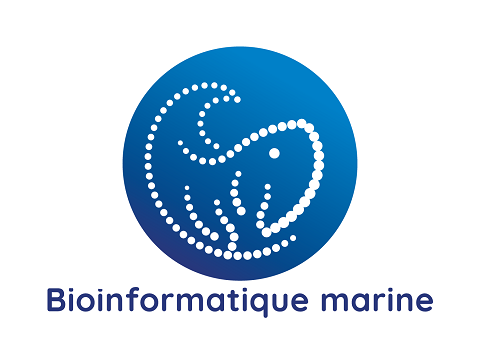16 rRNA Metabarcoding of Microcystis microbiome along a salinity gradient
Fate and interaction between Microcystis and its microbiome in estuary.
Simple
- Date (Creation)
- 2023-10-30
- Date (Publication)
- 2023-10-30
- Identifier
- FR-330-715-368-00032-IFR_BIOINFO_DEMISEL_20231030_phytox_EB
Identifier
No information provided.
- Credit
- Ifremer
Author
IFREMER
-
Briand Enora
Centre Atlantique - Rue de l'Ile d'Yeu - BP 21105 - 44311 Nantes Cedex 03
,
Nantes
,
France
02 40 37 40 34
Author
IFREMER
-
Reignier Oceane
Centre Atlantique - Rue de l'Ile d'Yeu - BP 21105 - 44311 Nantes Cedex 03
,
Nantes
,
France
02 40 37 43 76
- GEMET - INSPIRE themes, version 1.0
-
- Habitats and biotopes
- Thèmes Sextant
-
- /Biological Environment/Bioinformatics
- ODATIS aggregation parameters and Essential Variable names
-
- Bioinformatics
- Use limitation
- CC-BY (Creative Commons - Attribution)
- Access constraints
- License
- Use constraints
- License
- Spatial representation type
- Grid
- Metadata language
- English
- Character set
- UTF8
- Topic category
-
- Oceans
- Reference system identifier
- EPSG / WGS 84 (EPSG:4326) / 8.6
Spatial representation info
No information provided.
Spatial representation info
No information provided.
- Distribution format
-
-
(
)
-
(
)
- OnLine resource
- /home/ref-bioinfo/ifremer/phytox/demisel/ ( NETWORK:LINK )
- OnLine resource
-
Lien de téléchargement
(
WWW:DOWNLOAD-1.0-link--download
)
Lien de téléchargement
- OnLine resource
- Publication ENA ( WWW:LINK-1.0-http--link )
- OnLine resource
- Digital Object Identifier (DOI) ( WWW:LINK-1.0-http--metadata-URL )
- Hierarchy level
- Dataset
- Statement
- Due to climate changes and eutrophication, blooms of predominantly toxic freshwater cyanobacteria are intensifying and are likely to colonize estuaries, thus impacting benthic organisms and shellfish farming representing a major ecological, health and economic risk. However, little is known about the fate of natural colonies of Microcystis by salinity increase. In natural environment, Microcystis form large mucilaginous colonies with numerous heterotrophic bacteria embedded in the mucilage. This micro-environment, known as phycosphere, is the place of numerous biotic interactions that influence the development of both cyanobacterial and bacterial communities, as well as the production and fate of toxins. The aim of this project is to study the impact of a salinity increase on the cyanobacterial genotypic composition, the physicochemical characteristics of the mucilage and the production of specific metabolites (toxins and compatible solutes) along a French freshwater-marine gradient at different phases of a bloom. We will also determine how these changes influence the structure and the composition of the bacterial community associated with Microcystis and their function in toxins degradation. The project will combine in situ monitoring and in vitro experiments.
- File identifier
- d68d0feb-5349-49b2-80ee-2acd32c7faca XML
- Metadata language
- English
- Character set
- UTF8
- Hierarchy level
- Dataset
- Date stamp
- 2024-03-19T16:45:57.027Z
- Metadata standard name
- ISO 19115:2003/19139 - SEXTANT
- Metadata standard version
- 1.0
Point of contact
IFREMER
-
Briand Enora
Centre Atlantique - Rue de l'Ile d'Yeu - BP 21105 - 44311 Nantes Cedex 03
,
Nantes
,
France
02 40 37 40 34
 Catalogue PIGMA
Catalogue PIGMA

